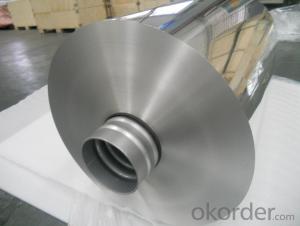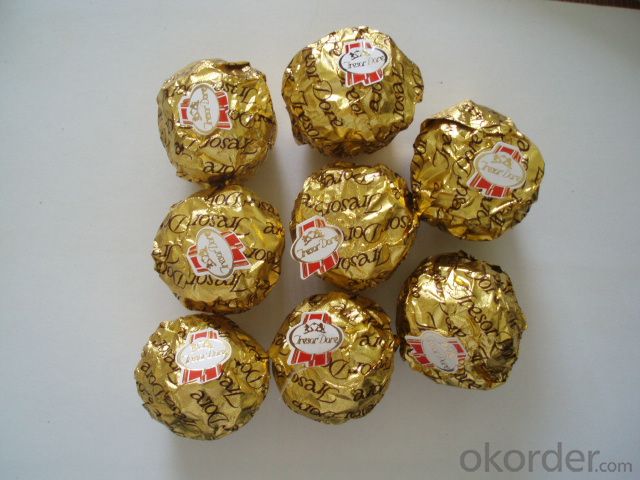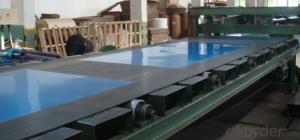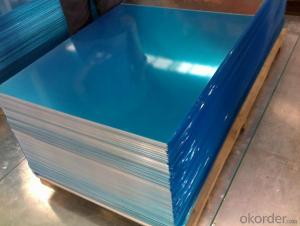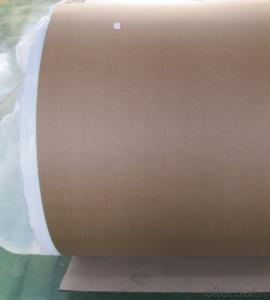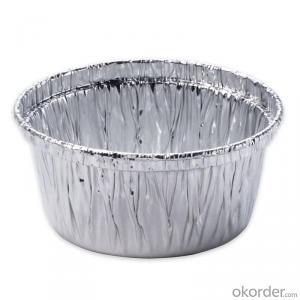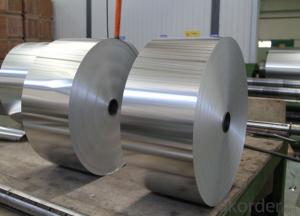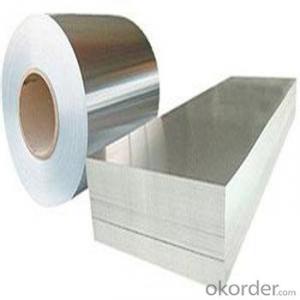4x10 Aluminum Sheets - Aluminium Foil for Lamination 8011/1235/3003
- Loading Port:
- Shanghai
- Payment Terms:
- TT or LC
- Min Order Qty:
- 5 m.t
- Supply Capability:
- 5000 m.t/month
OKorder Service Pledge
OKorder Financial Service
You Might Also Like
Tolerance: thickness tolerance +/-0.8%, width tolerance +/-1mm
Application and Usage:
Building Material , Insulation, Shoes &Tents Eyes,Corner Beads,Automotive Industrial, POP Can Bottle and Cap,Deep-Proceeding Case,light industry, TV back board,Street Sign, PP caps, Cell mask and so on.
Surfact Quality :
Be free from Oil Stain, Dent, Inclusion, Scratches, Stain, Oxide Dicoloration, Breaks, Corrosion, Roll Marks, Dirt Streaks and other defect which will interfere with use,
Mechenical Property:
Chemical Composite and Mechanical Property could meet the requirements of GB/T, ASTM, ENAW, JIS Standard
Packing:First, plastic cloth with drying agent inside; Second, Pearl Wool ; Third, wooden cases with dry agent , fumigation wooden pallets, aluminum surface could cover blue PVC film

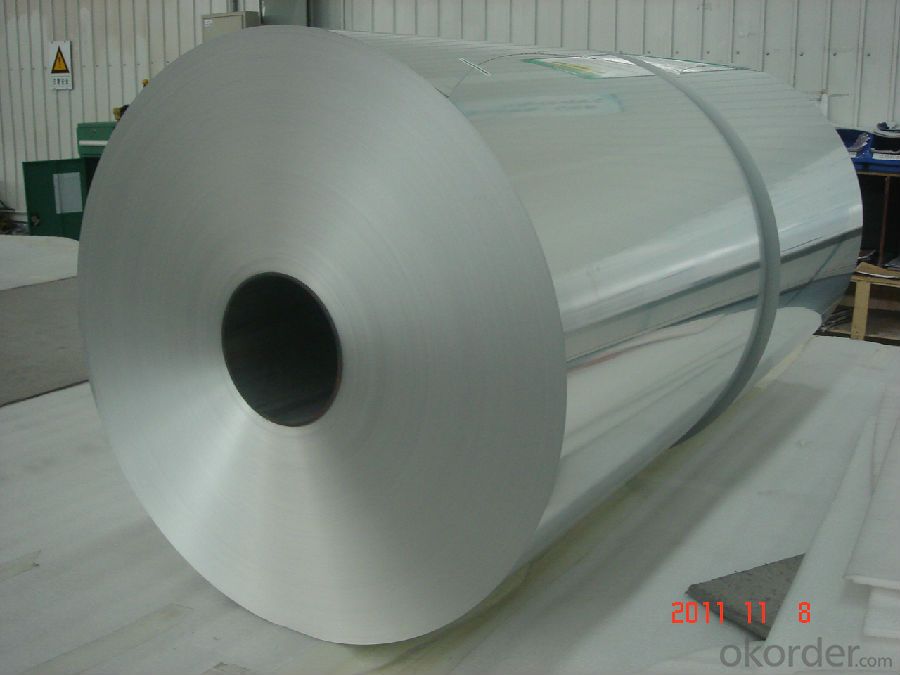
- Q: Are the aluminum sheets suitable for manufacturing traffic signs?
- Yes, aluminum sheets are highly suitable for manufacturing traffic signs. Aluminum is a durable, lightweight, and corrosion-resistant material, making it ideal for outdoor applications. It can withstand harsh weather conditions and remains visible for a long time. Additionally, aluminum is easy to work with, allowing for easy customization and installation of traffic signs.
- Q: This question asks if aluminum sheets can be recycled repeatedly without losing their quality.
- <p>Yes, aluminum sheets can be recycled multiple times without losing their quality. Aluminum is a highly recyclable material, and the recycling process does not degrade the material's properties. In fact, recycled aluminum requires significantly less energy to produce compared to mining and refining new aluminum from bauxite ore. This makes aluminum recycling an environmentally friendly and cost-effective process, contributing to sustainability and reducing the demand for raw materials.</p>
- Q: HI! I have a few of my most favorite aluminum baking pans and lids that are brown with baked on grease etc...and I have not the strength or endurance to stand and buff them with a scratchy pad til they gleam....are there any cleaning chems or soaps that will do this for me?? Thanks!! Mama never told me there'd be days like this!
- put pans in sink boil some water with cream of tartar and pour on pans allow to soak as water cools scrub pans should take care of issues
- Q: The radius of an atom of aluminum is 143pm and there are 10^12 in a meter. The aluminum is a 3x3cm square. The density is 2.70 g/cm^3. I found the mass to be 0.03g. I found the volume to be 0.09cm^3
- Good quality standard aluminum foil such as Reynolds brand is 0.007 inches thick. If aluminum atoms are indeed 143 picometers in radius then the foil would be 2,486,713 atoms thick. Of course, the thickness is not controlled to a tolerance of one atom. (Cheaper brands are about 0.0060 to 0.0065 inches thick.) The ionic radius of aluminum is commonly accepted to be 72 pm, and as of 2008 a covalent radius of 121 pm. . .
- Q: What are the different methods of forming aluminum sheet?
- There are several methods of forming aluminum sheet, including rolling, extrusion, stamping, and spinning.
- Q: If Aluminum can, in fact, not be sterilized I would love to know why.
- Aluminum can be sterilized. A variety of methods exist for sterilizing any material, including (but certainly not limited to) food, medical devices such as needles/syringes, and surgical metals. Here are two ways you can sterilize aluminum: Autoclave it. Autoclaving is a process where you heat an item up to approximately 300 degrees F, under high pressure. The combination of the pressure and the heat kills anything that's alive, rendering it sterile. Almost every lab in the country has at least one autoclave machine and most labware manufacturers today build their products keeping in mind that the product will be autoclaved (perhaps many dozens of times) in the future. Gamma radiation. Gamma radiation sources, such as Cobalt-60, are used to sterilize almost every item you can think of that is individually packaged in a hospital or laboratory, including test tubes, general labware, and any other liquid-handling instruments. Some foods are also sterilized this way to increase shelf life (don't worry, the food never holds any of the radiation). Aluminum can not only be sterilized, but it can be sterilized using techniques and protocols very common today. Hope this helps.
- Q: after putting aluminum sheet into the area between magnet and iron products, could magnet attract iron again?
- magnet can attract iron if the aluminum sheet isn't too thick. Because aluminum can't cut off magnetic line of force, unless aluminum sheet's thickness surpass the range of magnetic attraction.
- Q: some car manufactures use aluminium car body on a steel sub-frame. explain, using electrode potential what would happen if a weak acid was to become trapped in the space between these two metals!! any current plzz help, its for my assignment, and i dont understand
- Chemistry is all about how atoms exchange electrons. Some kinds like electrons better than others, and this is the basis of electrochemistry and Redox reactions. It all starts with the acid: HAcid - H(+) + Acid(-) The important thing is the H(+) ion, which is positive because it is a Hydrogen atom which has lost an electron. This leaves it with a positive charge, since it is nothing but a positive proton at this point. Fe + 2H(+) - Fe(+2) + H2 The above is a typical reaction between an acid and most metals. The H(+) ions strip an electron from the metal to form a metal ion and Hydrogen gas. What has happened is the Hydrogen ions have oxidized the Iron. The Iron in turn has reducted the Hydrogen. In terms of electrochemistry, there are two half reactions going on simutaneously. First, the Iron atoms generate two negative electrons: Fe - Fe(+2) + 2e(-) = OXIDATION OF IRON Then the Hydrogen ions combine with the electrons to form Hydrogen gas: 2H(+) + 2e(-) - H2 = REDUCTION OF HYDROGEN Note that in both reactions, the charges are equal on either side of the reaction. The next part of this process happens when the Iron ions come into contact with the Aluminum metal: 3Fe(+2) + 2Al - 2Al(+3) + 3Fe Note the Iron ions are recting exactly the same way the Hydrogen ions did. In other words, they are oxidizing the Aluminum. The Aluminum is now reducing the Iron. The net result of this is that the acid rusts the Iron and then the Iron rusts the Aluminum. The end result is the production of tiny amounts of Hydrogen gas, The Iron being displaced from where it had initially been, and the solid Aluminum discintegrating into some form of Aluminum salt. Calculations involve something called an electrochemical series and the voltage is given using the Nerst equation. Both the electrochemical table and the equation can be found in any chemistry textbook.
- Q: What are the different types of coatings applied to aluminum sheet?
- Aluminum sheet can be coated with various types of coatings, each possessing its own unique properties and advantages. Some commonly used coatings are as follows: 1. Anodizing: This process involves the formation of a protective layer of aluminum oxide on the sheet's surface through electrochemical means. Anodizing enhances the appearance of aluminum by creating a vibrant and long-lasting finish, while also providing excellent resistance against corrosion. 2. Powder Coating: A dry powder is applied to the aluminum sheet using electrostatic methods, and then cured under heat to form a robust and protective coating. Powder coating offers outstanding durability, chip and scratch resistance, as well as a wide range of color and finish options. 3. Paint: Aluminum sheet can be coated with paint, offering both aesthetic appeal and protection. The paint is applied as a liquid and then cured under heat to create a strong and durable coating. Paint coatings provide versatility and customization options, including a vast array of colors and finishes. 4. Laminating: To provide additional protection against scratches, abrasion, and UV damage, a thin layer of protective film or laminate is applied to the surface of the aluminum sheet. Laminating enhances the appearance of the sheet while ensuring its long-lasting durability. 5. Conversion Coatings: Chemical treatments are employed in conversion coatings to convert the surface of the aluminum sheet into a more corrosion-resistant compound. Examples of conversion coatings include chromate conversion coatings and phosphating, which create a protective layer, improving the adhesion of subsequent coatings. 6. Clear Coatings: Clear coatings, such as lacquer or clear powder coat, can be utilized to safeguard aluminum sheet against oxidation and corrosion while maintaining its natural appearance. Clear coatings are commonly used when the goal is to preserve the metallic look of the aluminum. These are just a few illustrations of the diverse range of coatings that can be applied to aluminum sheet. The selection of the appropriate coating depends on factors such as desired appearance, required level of protection, and the specific application of the aluminum sheet.
- Q: I know 7005 series aluminum is stronger and lighter than 6061series, but how does 7005 compare to 2014 series?
- This okorder /.... Aluminum is a very different animal than steel, so the choice of alloy depends on what the application is. For instance, 7075-T6 is the most common high-end alloy for chainrings, but it has comparatively low tensile and yeild strengths.....and yet it's the most durable choice for the application. Chainrings made out of a stronger alloy won't last as long and may develop stress cracks. Some of the alloy choices depend upon machining and welding characteristics, too...it's not always about the strongest or lightest. You wouldn't want a part like a seatpost to be made of the material with the best numbers but that has a tendency to crack after welding.
Send your message to us
4x10 Aluminum Sheets - Aluminium Foil for Lamination 8011/1235/3003
- Loading Port:
- Shanghai
- Payment Terms:
- TT or LC
- Min Order Qty:
- 5 m.t
- Supply Capability:
- 5000 m.t/month
OKorder Service Pledge
OKorder Financial Service
Similar products
Hot products
Hot Searches
Related keywords
